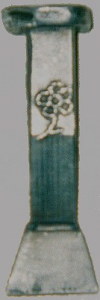CSUN Prof’s Study Finds Homophobia Hinders Women in the Building Trades

Amy Denissen
The sexual revolution has seen women progress from the secretarial pool to being presidents of corporations and universities. While there is still room for improvement, women are making inroads in fields never thought possible just decades ago, except in a few areas — including the building trades.
A recent study by California State University, Northridge sociology professor Amy Denissen and her colleague Abigail Saguy, a sociology professor at UCLA, found that a combination of gendered homophobia and sexist stereotypes have kept the numbers of women to less than 2 percent of those working in the construction industry.
“There are two stages where women encounter obstacles in their ability to get a job, and then maintain that job and progress in their profession,” Denissen said. “The first is at the point of entry, when they face sex discrimination in hiring. In construction, women who are applying for a job have been told, ‘you are not going to be hired because you are a woman.’
“The second stage is the woman’s ability to stay on a job,” she continued. “This is where sexual harassment, withheld training, the lack of support or mentoring from their male colleagues and other ways of excluding women impede a woman’s ability to progress or remain in the field.”
For their study, “Gendered Homophobia and the Contradictions of Workplace Discrimination for Women in the Building Trades,” Denissen and Saguy interviewed 63 tradeswomen to examine how cultural meanings of sexual orientation — as well as gender presentation, race and body size — affected a woman’s ability to work in the construction industry.

Demonstrating the salience of gender at work, this sheet metal worker’s tool is engraved with a flower, rather than the tradewoman’s initials as tradesmen traditionally do for each other. Photo courtesy of Amy Denissen.
Denissen said one of the most significant stereotypes is that if a woman wants to work in construction, the assumption is often made that she is a lesbian, regardless of her true sexual orientation, and she regularly faces homophobic and sexist remarks at work.
“Tradeswomen told me they would avoid other women on the job site to prevent homophobic remarks and discrimination from coworkers,” Denissen said. “Many of the women said that even if they could handle the harassment, they didn’t want to put other tradeswomen at risk.”
The homophobia is so pervasive that some male construction workers discourage their female colleagues from networking with other tradeswomen or attending tradeswomen support groups or conferences “because it’s a bunch of lesbians.”
“According to the tradeswomen I interviewed, there is a lot of homophobia in the
construction industry,” Denissen said. “While some if it is banter between straight men, it
can create a hostile climate and a lot of gay and lesbian women do not feel safe and are pressured to stay in the closet for their safety.
“It’s a burden that they carry with them at all times,” she added. “Construction work is not easy and, regardless of your gender, it requires you to be vigilant at all times to ensure your safety and that of those around you. When you add that additional layer of sexual harassment and homophobia, the pressures are even worse.”
Within that homophobic stereotype lies a contradiction for those women who hope to stay in the industry and succeed.
“For some tradesmen, if a woman is masculine presenting — whether straight or lesbian — such as women who look ‘butch’ or tomboyish, then the men were more willing to treat her like ‘one of the guys’ under the presumption that this was a woman who wanted to be a guy and do guy things,” Denissen said. “But at the same time, other men would call them ‘freaks’ for violating the gender norms and subject them to homophobic harassment.”
The study found that women who are more feminine presenting face other obstacles. They are subjected to more sexual harassment, as well as assumptions that they were incompetent and given stereotypical tasks such as sweeping or cleaning up the worksite. However, male colleagues sometimes see them as “sisters or daughters” and take them under their wing.
“Women never know what they are going to face on the job site, and it’s complicated for women to prepare themselves for the variety of reactions from their coworkers” Denissen said.
Denissen noted that in all the conversations she had with tradeswomen, none of them could point to a single male colleague who was openly gay.
“As hard as it is for them, they said it was too dangerous for an openly gay man to work in the industry,” she said.
Denissen pointed out that in the late 1970s, women made up 7 percent of apprentices in the construction industry. It was during a time when Executive Order 11246 was extended to enforce affirmative action standards for women in the building trades. But by the 1980s, support for those standards waned, and women in the construction industry had little recourse in trying to fight harassment and discrimination. As a result, women’s numbers in the industry have declined.
“First and foremost, if we enforced the laws we already have, we’d see a big improvement for women in the construction industry,” Denissen said. “Next, we need to strengthen laws that have been weakened over the years regarding protections for workers.
“What’s really encouraging is that tradeswomen are forging ahead despite the pressures they face at work, forming their own support and networking groups,” she continued. “And there are more tradesmen who are willing be mentors and advocates for women. With greater enforcement of the law and more men stepping up to combat discrimination and harassment in the industry, the true progress can be made.”

 experience
experience